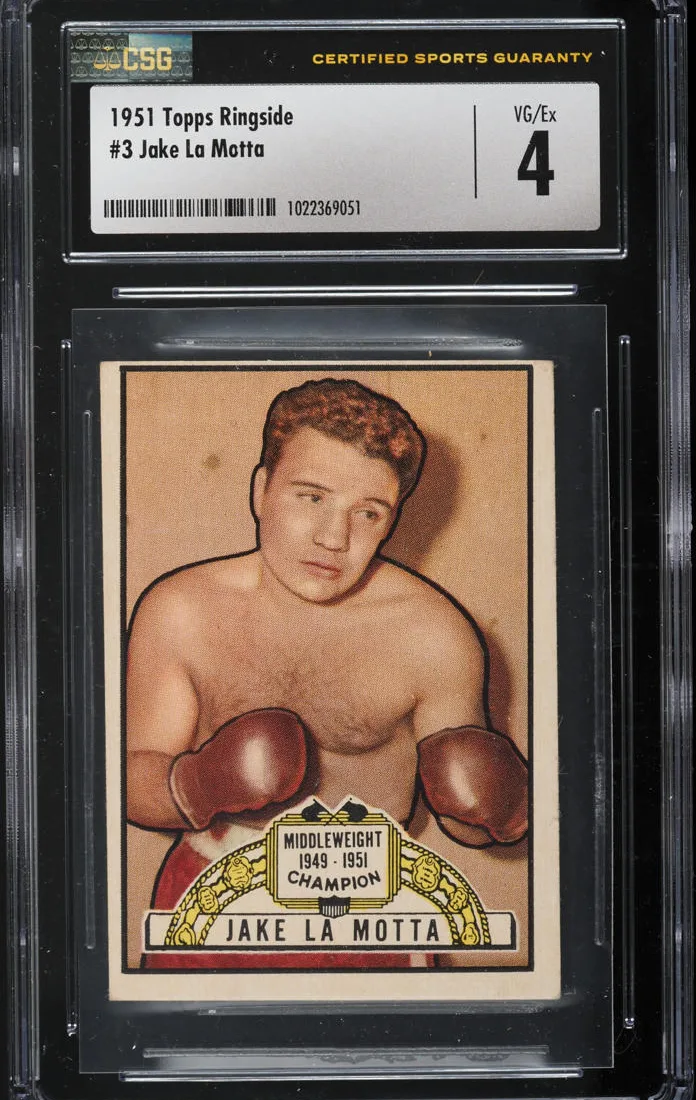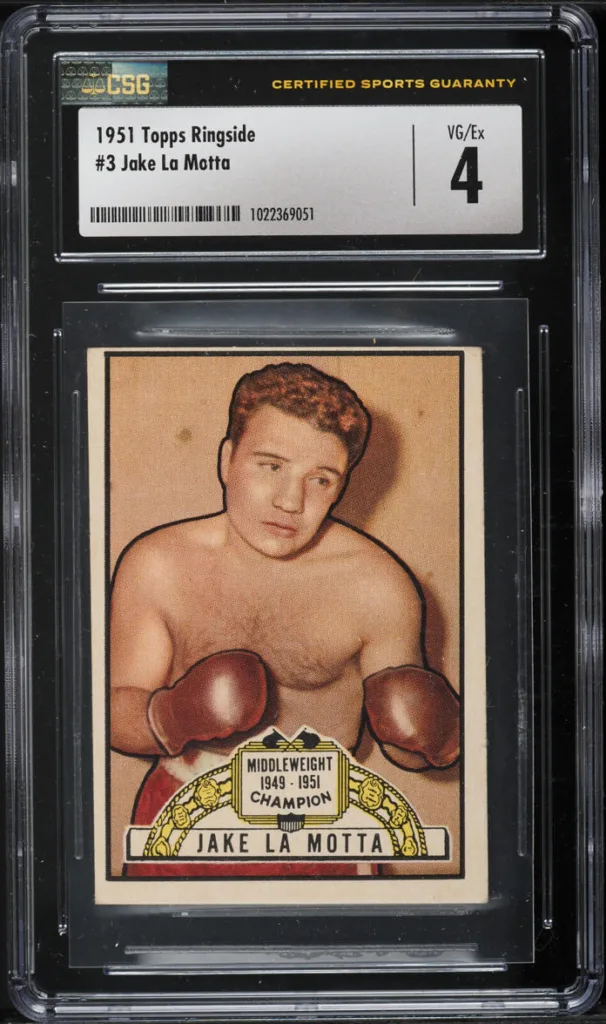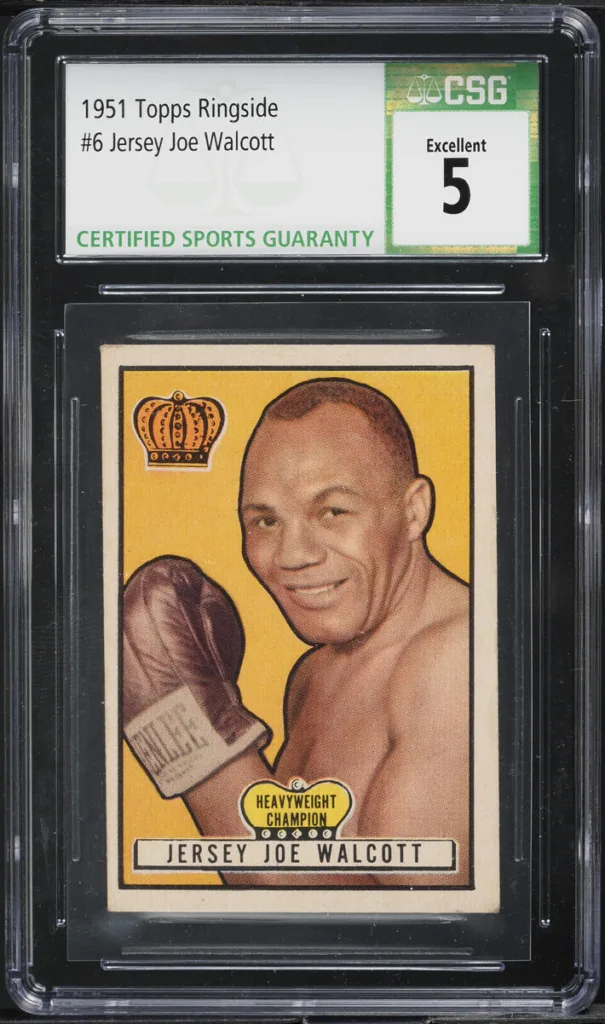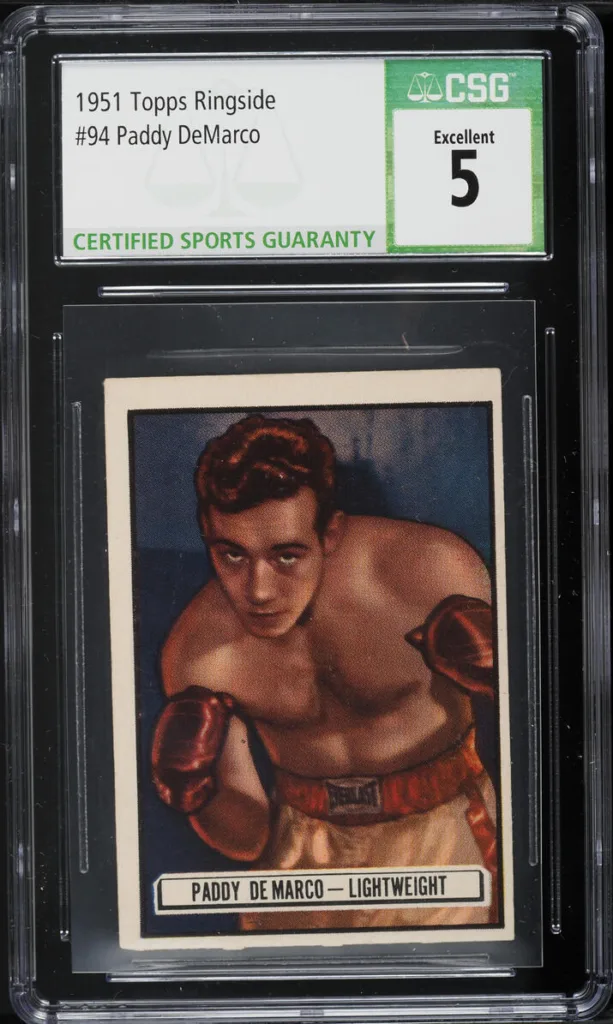
The Gold Standard for Pugilist Cards
The announcement of a July 20, 2024 boxing match between e-celeb Jake Paul and retired legend Mike Tyson arrived unexpectedly last year like a phone call from America’s coolest expat renegade uncle. Of course, The showmanship and trash-talking already happening outside the ring has long been part of boxing’s appeal.
According to folk history, this American catharsis ritual was introduced by 19th century immigrants. In the time before rules were standardized and written down, bare-knuckle fights grew in popularity during the 1860s and 1870s. John L. Sullivan successfully made the switch from bare fists to gloves in 1892, and from that point until the Great Depression, boxing gradually became more rule-bound and more popular.
By 1951, boxing was at the peak of its popularity. Stars like Jack Dempsey and Joe Lewis were famous around the world. That year, sometime after Valentine’s Day, Topps released a 96-card set that featured the legends of the sport — all the way back to Sullivan. The Topps Ringside set remains the quintessential example for the sport of boxing, with names like Sullivan, Marciano, Lewis, and LaMotta anchoring the collection.
All the Biggest Stars
The set was released in two distinct series and included striking full-color drawings of dozens of top contenders. There are also five wrestlers sprinkled into the set, as well as a handful of cards that feature action shots of two fighters opposing one another. Some of the cards were issued in a two-panel configuration and will be found with perforations along one edge.

The first series was certainly released after Valentine’s Day of 1951, which is evident because the back of “Sugar” Ray Robinson’s card recounts his exciting victory over Jake LaMotta at Chicago Stadium, which occurred on that date, and which is remembered as “The Saint Valentine’s Day Massacre.” LaMotta, as stubborn a fighter as there ever was, afterwards claimed, ludicrously, that “if the referee had held up another 30 more seconds, Sugar Ray would have collapsed from hitting me.”
If the Robinson v. LaMotta fight wasn’t the biggest fight of the year, it could only have been overshadowed by the fight in which previously undefeated Roland La Starza (37-0) finally lost to Rocky Marciano in a very close split decision. It was the victory that propelled Marciano to stardom, but it would not be until September 23, 1952 that Marciano earned the crown by defeating Heavyweight champ Jersey Joe Walcott.

A Mature Design
Marciano’s card, which features him hitting the bag in a gym, is generally thought to be the cornerstone card in the set. High grade examples of the card remain in circulation and command a significant premium. As with all illustrations in the collection, the drawing of Marciano is realistic and artful. On each card, fighters are outlined in black, and the backgrounds are generally muted or generic. A white border adds contrast and gives the cards a polished and mature appearance.

Card backs in the Ringside set include, in a top section, a card number, the fighter’s hometown, birth date, height, and weight. The bottom portion features the fighter’s record, including knock-out count, and a short paragraph detailing his origin story, various anecdotes, and standout performances.
Boxing’s Representative Men
The representative nature of boxing has long fascinated sports fans and commentators. Perhaps the most well-known fight in this category is the pair of fights held in 1936 and 1938 between German Max Schmeling and Joe Lewis, who was at the time the most successful African American fighter since Jack Johnson. Contemporary sports journalists were quick to note racial undertones in the matchup, and the ring seemed to many fans to be the place of a struggle between fascism and democracy. The day after the ’38 fight, American newspapers featured photos of Black Americans celebrating Lewis’ victory.
Lewis held the heavyweight title for an astonishing twelve years, from 1937-1949. His card features him with his gloves up against a bright green background, and a graphic showing a champion belt accompanies his name. The back of his card, #88 in the set, suggests that he fought in front of more people than any other and calls him “a truly great American.”
Lewis himself understood his fame as coming with an important degree of social responsibility, and he was a consistent and vocal advocate for civil rights. Lewis’ adopted hometown, Detroit, features a giant sculpture of his forearm and fist, a testament to his enduring popularity and lasting cultural impact.
Pugilism’s Modern Resurgence
There had been previous boxing sets, most notably the Leaf series of 1948. But Topps’ Ringside set remains the gold standard because it is generally thought to be more elegantly designed and comprehensive, including 96 cards compared to Leaf’s 50.
The Homeric texts suggest that boxing was a standard sport even in the Bronze Age, and a beautiful bronze statue of a resting boxer was discovered in 1885 on Quirinal Hill in Rome, dated to between 330 and 50 B.C.E. But despite its ancient origins and old-world import, boxing only achieved widespread respectability in America in the 20th century.
The 1951 Ringside set does justice to the early period of boxing on this continent, and its inclusion of so many legends of the sport certainly suggests that interest in this unique set will continue to grow.